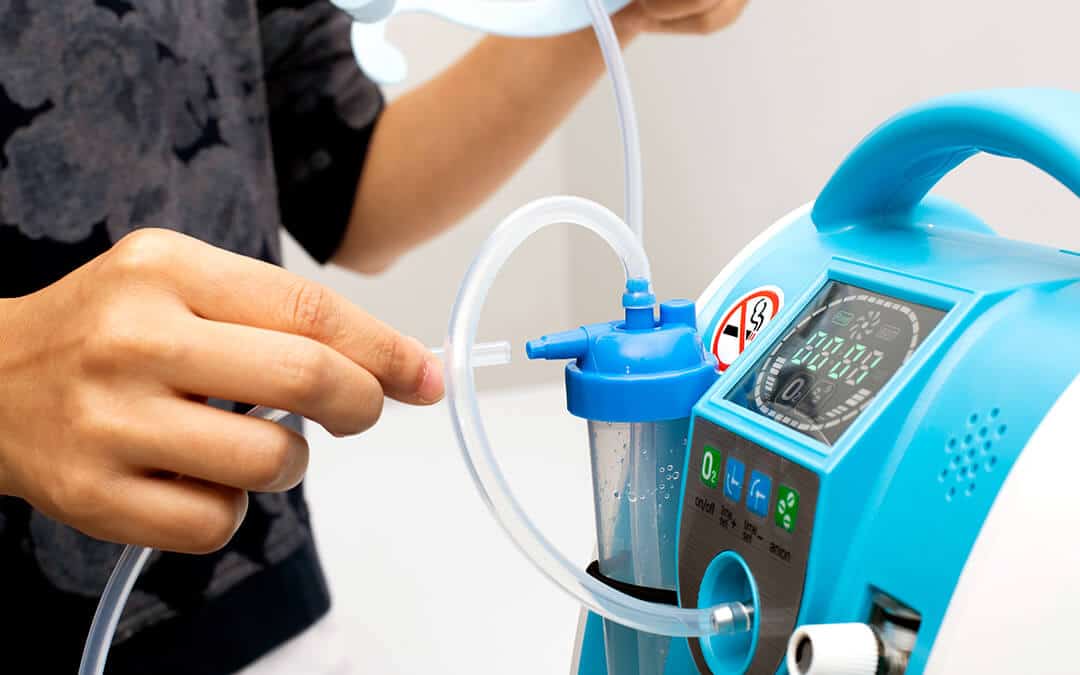One of the diseases that make up COPD, emphysema develops over time and involves the gradual damage of tissues in the lung, specifically the tiny air sacs known as alveoli. Over three million people in the United States have been diagnosed with emphysema.
With no definitive cure for emphysema, doctors and patients focus mostly on managing symptoms. Oxygen therapy remains one of the most common treatments for emphysema.
What are the Signs of Emphysema?
The most common symptoms of emphysema include shortness of breath, coughing with mucus, wheezing, chest tightness, and a whistling or squeaky sound you can hear when you breathe.
However, some of the more severe signs and complications linked to emphysema include a loss of appetite, depression, problems having sex, sleep problems, blue lips or nail beds, fatigue, frequent lung infections, and morning headaches.
If you’re a smoker, the disease tends to start developing around ages 45 to 60.
What is Emphysema?
Because of its link to smoking, emphysema stands as one of the most preventable respiratory illnesses. Other causes such as air pollutants, an alpha-1 antitrypsin deficiency, and other respiratory infections can also play a role.
In order to diagnose emphysema, patients may take several tests including chest X-rays, pulse oximetry, spirometry and pulmonary function tests, arterial blood gas tests, and electrocardiogram (ECG).
Using Oxygen as a Treatment for Emphysema

Generally, doctors recommended oxygen therapy for emphysema sufferers whose blood oxygen saturation falls below 88%, or if their blood oxygen level falls below 55 millimeters of mercury (mmHg) at rest. At these levels, many patients will use oxygen continuously. This usually indicates using oxygen for fifteen hours a day or more.
If patients are only experiencing these levels following exercise, however, a doctor might suggest using oxygen for shorter periods of time.
There are several at-home options for oxygen therapy, including:
- An oxygen concentrator – takes air from surroundings and concentrates it into oxygen, can be mobile with the user
- Compressed oxygen – delivers oxygen to user via an oxygen tank, most are ambulatory and can move around with user
- An oxygen-preserving device – is used in tandem with compressed oxygen, only dispenses oxygen when the user is inhaling, conserving oxygen and decreasing risk of oxygen overuse
Using oxygen with emphysema can help the user live a longer and more comfortable life. Decreasing the daily symptoms of emphysema can greatly improve the user’s quality of life.
What are the Risks of Oxygen Therapy?

While oxygen therapy benefits many living with emphysema, patients should also be aware of the risks of oxygen therapy. The greatest risk of using oxygen is that it is an explosive gas. Therefore, close proximity to lit candles, cigarettes, and open flames can be extremely dangerous.
Some risks attributed to oxygen therapy include:
- Dry nose or throat, which can lead to coughing or nosebleeds
- Headaches
- Complications, such as hypercapnia
- Oxygen toxicity
For some of these minor complications, doctors can offer several solutions. For instance, different oxygen masks that retain moisture are available.
However, for the more severe complications, like oxygen toxicity, the treatments might need greater attention.
It’s important to know the potential signs of oxygen toxicity, which include sudden:
- Chest pain
- Severe coughing
- Shortness of breath
- Dizziness or disorientation
- Headaches
- Anxiety
- Sudden hearing or sight changes
- Seizures
It’s important for patients to discuss oxygen therapy with their doctors. How much oxygen they need, how often, and what equipment they use can vary depending on the situation. Patients should contact their doctors immediately if experiencing any signs of oxygen toxicity.
To learn more about emphysema, its signs, and how oxygen is an effective treatment for managing the symptoms, click here to read more.
Is your business looking for medical-grade oxygen and other gases? At CalOx, we make it easy to get the gases you need when you need them, via subscription or delivery. We’ve been delivering medical gases to Los Angeles area businesses since 1936. With dependable deliveries and services, we’re your number one source for medical-grade gases.
